- Register
- Log in to Tune-In
- Wishlist (0)
-
Shopping cart
(0)
You have no items in your shopping cart.
Beatles News
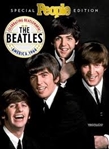
Nearly 55 years after the Beatles landed at New York City’s John F. Kennedy Airport on Feb. 7, 1964, PEOPLE is taking a look back at the love affair between a band and a country in an updated Celebrating Beatlemania! The Beatles special issue.
“Thanks to generations of new fans joining the still-devout baby boomer Beatlemaniacs, the band is bigger now than it was during the Beatles’ meteoric decade-long career,” writes American Theater magazine editor Rob Weinert-Kendt in the foreword.
The 96-page special edition is filled with scenes from the band’s early years, from their debut appearance on The Ed Sullivan Show (that 75 million Americans tuned in to watch!) to the mass hysteria that ensued during their 1965 show at Shea Stadium. Read about John Lennon, Paul McCartney, George Harrison, and Ringo Starr‘s early lives and how they each began their musical careers.
Source: Christina Butan/people.com
details
Maybe Paul McCartney’s “FourFiveSeconds” session with Kanye West had more of an effect than it first seemed — McCartney has quietly dropped a new song called “Get Enough” that features some heavy autotune that actually at times recalls West’s work circa “My Beautiful Dark Twisted Fantasy.”
The song, which arrives just four months after McCartney’s latest album “Egypt Station,” is a collaboration with Zach Skelton and OneRepublic’s Ryan Tedder and is actually quite different from the material on that album. It opens with McCartney singing a characteristic melody with a reverb-heavy vocal and piano chords that actually evoke John Lennon’s 1970 hit “Instant Karma” before the autotune kicks in and it heads into unfamiliar territory for the singer.
Then, a couple of minutes in, a new section begins that bears the hallmarks of Tedder’s work — a sweeping and stadium-sized melody with big production and the OneRepublic singer’s familiar high vocals. Otherwise, the song is largely a McCartney solo project, with him credited as playing bass, piano, acoustic guitar, harpsichord, synthesizer and synth-bass, whil details

Who are the best bands in the history of rock? From Arctic Monkeys to AC/DC, The Beatles to Biffy Clyro, here are the essential groups you need.
The Beatles
John Lennon, Paul McCartney, George Harrison and Ringo Starr: four men from Liverpool who literally changed the way we understood and enjoyed pop music. They will live on forever.
Source: RadioX
details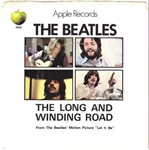
“Intolerable interference.” That’s how Paul McCartney described what Phil Spector did to his song “The Long And Winding Road.” McCartney used the phrase when he filed a lawsuit against the other three Beatles in 1971. McCartney was looking to dissolve the Beatles’ partnership. He gave six reasons for his case, and one of those reasons was the final version of “The Long And Winding Road” — a song inspired by the Beatles’ breakup that also happened to be the Beatles’ last American #1.
McCartney had written “The Long And Winding Road” in 1968, sitting at his piano at his farm in the Scottish countryside. He’s said that, when he wrote it, he was feeling “flipped out and tripped out,” a better turn of phrase than anything he’d write into the song. On paper, it’s a song about a romantic relationship dissolving. And maybe that’s partly what caused McCartney to write the song; he was, after all, ending one relationship and beginning another. But the meta-text — the story that everyone must’ve understood when they heard the song — is that the Beatles were moving away from one another and that the so details
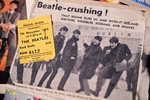
A Beatles superfan has donated a rare and treasured collection of band memorabilia to a museum in Dublin.
Terri Colman-Black spent decades buying unique pieces from shops and newsagents around Dublin and went on to build up a treasure trove of relics dedicated to the Fab Four.
At the age of 14, Ms Colman-Black’s love for John Lennon, Paul McCartney, George Harrison and Ringo Starr was compounded after she went to their first and only concert in Dublin in November 1963.
Among some of the items on display at the Irish Rock N Roll Museum Experience in Dublin are the ticket and programme from their Irish concert, a George Harrison model kit and Beatles magazines.
The mother-of-two said she started to buy the collectables as she wanted to surround herself with the Beatles.
“In those days you didn’t have a lot of money, people didn’t think about memorabilia,” she said.
“I started to buy things because I just wanted them around me, to stick up on the wall, to put in my bedroom. More and more things became available, I got as many pictures as I could get.
Source: irishexaminer.com

“What do you call that hairstyle you’re wearing?” asked the journalist.
“Arthur,” George replied.
Since George was George Harrison of the Beatles, the haircut was a moptop, which I suppose got its name because it was meant to look like somebody had jammed a mop into the top of your head. I thought Arthur was a much better name and tried calling it that but it never caught on.
Anyway, when you are a standard-issue loveable moptop, you are meant to be horsing around, having a lark, being a hoot. The Beatles did all that, probably so you wouldn’t notice they were singing nasty, rude, frankly erotic songs. “Sexual intercourse began in nineteen sixty three,” as Philip Larkin noted. “Between the end of the Chatterley ban and the Beatles’ first L.P.” This was only 1964, so if you were going to usher in a sexual revolution in Britain, best do it politely, in tidy suits and schoolboy haircuts.
Source: Ipsita Chakravarty/scroll.in
details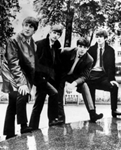
It would be hard to describe the San Francisco Tape Music Festival as a pop event — except maybe this year, it might just be a little apropos. Included amid the usual profusion of diverse and unpredictable offerings is “Revolution 9,” the classic sonic collage from the Beatles’ so-called “White Album” that may still be the best-known example of “musique concrète.”
But that’s only one small slice of a four-concert annual event that bristles with prerecorded music of all shapes and vintages. This year’s lineup features a wealth of other works from the late 1960s by such composers as Morton Subotnick, Wendy Carlos and James Tenney.
From just the past year comes music by Brendan Glasson, Kristin Miltner, Larry Polansky, Kris Force and many more. It’s a testament to the variety that’s possible in this musical landscape.
Source: Joshua Kosman/datebook.sfchronicle.com
details
During in a recent interview with Sharyn Alfonsi from CBS News, The Beatles bassist Paul McCartney has revealed the behind his song called “Michelle”.
Paul said:
“Michelle… Which just meet me at the parties… Mainly an art school parties. John went to art school. And so me and John were the young kids crushing the party. So we weared black turtlenecks and try to look ‘very French’. I often take the guitar, sitting the corner and humming.
Thinking, you know some girl would say “WOW!” But never happened. Some day John said, “Remember that French thing you have you should finish that!” So I finished that.”
CBS wrote:
“McCartney said when Lennon attended art school parties, he and George Harrison would tag along. In an attempt to look more sophisticated, McCartney says he wore black turtlenecks and sat in a corner, where he strummed a guitar and sang in French. He hoped, unsuccessfully, to impress a girl.
The girl never came, but a new song did.
Source: Feyyaz Ustaer/metalheadzone.com
details
Kerala Police in order to create awareness on road safety has recreated the famous cover of The Beatles’ 1969 album “Abbey Road” in the state’s Kannavam town in Kannur district.
The state police recreated the poster of the English band in which four of them are seen walking across a zebra crossing outside Abbey Road Studios.
The picture was shared by the district collector of Kannur Mir Mohammed Ali and soon the picture went viral. Ali added a reference picture for those going through life on the slow lane.
The DC also dubbed the constable walking on the road as "Kannur's Beatles" and he also said that police had come together with local artists to promote road safety.
"Initiative taken by the Station House Officer (SHO) at Kannavam Police Station, collaborating with local artists to promote road safety in a remote part of the district," he wrote while sharing the picture on Thursday.
The move has gone viral on Twitter and is likely to achieve its objective of making people aware of road safety and the necessity to follow the traffic laws.
Source: Garima Satija/indiatimes.com
details
“The Dakota Winters”, Tom Barbash’s new novel, reads like a journalistic faux-memoir that feels familiar – especially if you knew New York in 1980, when Manhattan was emerging from a decade of bad press as a crime-ridden, drug-addled island of self-absorption.
Not that the seamy underside of the Apple is much on display here. Barbash instead focuses on the privileged, castle-like confines of a fabled apartment building on Central Park West, The Dakota, where “Rosemary’s Baby” was so ominously set, and where celebrities, most prominently ex-Beatle John Lennon and Yoko Ono, lived above it all.
His novel ambitiously blends fictional with historical characters, and it’s neither overwritten nor experimental. The fictional Dakota tribe, the Winters, mingles easily with the real one, via the first-person account of 23-year-old Anton, whose father Buddy, a comedian and former late-night TV talk show host, is charting a comeback. In the mid-1970s, Buddy Winter had famously walked off his show, disappeared for a while and navigated a vague mid-life crisis.
Source: Matt Damsker/usatoday.com
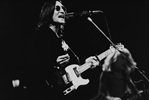
When you are a proud music geek, you sit and think about things like who is the ultimate rock star. There are a number of choices for a variety of reasons. For global impact it could very easily be Bob Marley. Elvis Presley was of course the first real rock star (not that he originated rock, but the first true rock star). With their mystique and charisma Jimi Hendrix and Jim Morrison have enthralled fans for generations. Mick Jagger and Keith Richards have embodied rock and roll for decades. When it comes to the idea of rock gods no one surpasses Robert Plant and Jimmy Page.
Then when you look at all the traits that define a rock star -- the talent that transcends generations; an uncompromising approach to their art; a voice for good; influence on other musicians; a willingness to evolve and a charisma that speaks to all languages and all cultures -- you could make a damn strong case for David Bowie, who might be number two.
Source: Steve Baltin/forbes.com
details
A NEW museum dedicated to educating people about The Beatles is set to expand with a new cafe and bar.
The Magical Beatles Museum was opened at the site of the former Lennon's Bar on Mathew Street in July by Roag Best, the brother of original Beatles drummer, Pete Best.
Having renovated the five-story warehouse on Mathew Street, it is hoped that this expansion will boost visitor numbers by at least 70% in the next year with the scope to create 20 new jobs.
Roag told the Globe: "Growing up, I wasn’t aware of how famous the Beatles truly were, I just loved spending time with my four friends – John, Paul, George and Ringo.
“A lot of items that I’ve held on to from this period are now of huge interest to fans, and it’s great to be able to give people a unique insight into the band’s history.
Source: Lauren Jones/wirralglobe.co.uk
details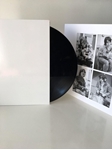
“The White Album” was always my favorite.
I discovered it in 1995 as an 11-year-old, swept up in the mania around The Beatles Anthology project, falling deeply in love with the band, and with music, for the first time.
As I wrote for the “Wall Street Journal” a few weeks ago, “The White Album” was chaotic where its predecessor was kaleidoscopic, and I thrilled at the chaos, even then.
I loved that the album was sweet and vicious, funny and freaky, earnest and sardonic, simple and complex by turns, a smorgasbord of tones and textures and subject matter the way only a double album can hope to be: a ditty about a sheepdog here, a plaintive hymn to God there, a mindless rocker that had something to do with a monkey.
There’s the metatextual mischief of “Glass Onion” (the darker underbelly of the Lewis Carroll landscapes John had explored with “Lucy in the Sky with Diamonds”), the mercurial mood-shifts of “Happiness Is A Warm Gun,” the caressing sweetness of “I Will” that followed on from the snarling lasciviousness of “Why don’t we do it in the road?” And George’s offerings were at a whole details
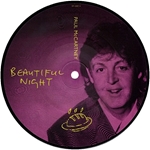
Mention a Paul McCartney song with drums and vocals by Ringo Starr, and an orchestral arrangement by George Martin, and you might think we’ve landed at some unspecified moment in Beatles history. In fact, we’re talking about an underrated moment in Paul’s solo catalogue, and the elegant ballad ‘Beautiful Night,’ which made its UK top 40 debut on the chart of 27 December 1997.
The track was the third and final single from McCartney’s Flaming Pie album, which had already yielded the ‘Young Boy’ and ‘This World Tonight’ releases. ‘Beautiful Night’ stands as something of a hidden gem in Paul’s solo career, with its pretty melody and evocative lyrics such as “I won’t need a castle, they’ve got castles in Versailles…and I’m still stranded, wondering why.”
The song had been around for a decade, with a version cut in New York in 1986 but shelved.
Source: Paul Sexton/udiscovermusic.com
details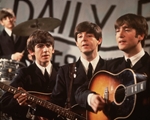
Studies show that it’s very rare for us to change our minds about a deeply-held belief. In a new series, writers reflect on their most memor
Studies show that it’s very rare for us to change our minds about a deeply-held belief. In a new series, i writers reflect on their most memorable U-turns
The Beatles have always been there, chasing me throughout my life. I had a tin yellow submarine on wheels when I was little. I had to sing “When I’m 64” in primary school. How I hated that song, and the weird Beatles, with their dirge-like songs – “Eleanor Rigby”, “Penny Lane”, “Nowhere Man” – forever on the radio.
You didn’t need to buy Beatles records to know the songs by heart and become depressed by their odour of a dreary post-war Britain.
Source: Andrew Johnson/inews.co.uk
details
